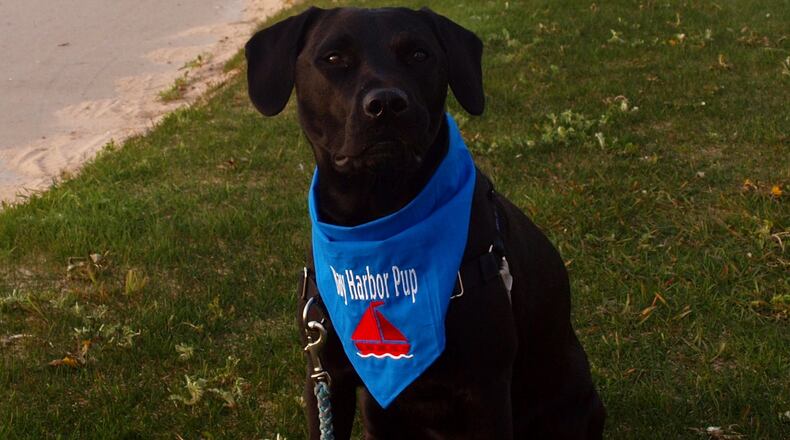Our first dog, Mocha, was a miniature schnauzer with papers documenting her lineage. Lucy, our second dog, was your typical Heinz 57 variety. When we adopted Teddy four years ago, we assumed he was a Lab mix.
The rescue agency, Love of Labs Indiana (LOLIN), from which we adopted Teddy only rescues Labs and Lab mixes, although my friend Melissa’s Sully, another LOLIN adoptee, is a Rhodesian ridgeback. How he slipped into the Lab category is a column unto itself.
Teddy is small for a typical male Lab. He weighs around 57 pounds; a normal male Lab’s weight is between 65-80. His height of 22 inches is slightly less than a normal male Lab who can be 22.5-24.5 inches tall.
Because of his size, many people ask about Teddy’s breed. A Lab-pit bull mix is a common assessment, usually accompanied by frowns, which is another possible future column.
Others want to know if he’s an English or American Lab. American Labrador and English Labrador are not official breeds. However, they are universally recognized, and the distinction is visible in the body build. According to the Labrador Retriever Club, “show/conformation” or “working/field” styles are better descriptions.
My personal favorite is miniature Lab. That’s not an official breed, either. It is a lot of hopeful wishing by people who love the breed but not the size.
While we were curious, having explored our own genetic heritage, we weren’t overly concerned by Teddy’s lineage. That changed one lazy summer day, when we strolled into our favorite Lake Michigan pet store and sitting on the checkout counter was an advertisement for dog DNA kits.
Easy and painless, it advertised. Results in just two weeks. Your dog’s full breed composition. All we had to do was swab Teddy’s cheek. We were sold.
I’d like to write that we were waiting on pins and needles until we got the results. But we kind of assumed he was going to be some form of Lab mix. After all, my husband Ed’s and my DNA test results showed a hodgepodge of ethnic groups. My top three were Great Britain, Germanic Europe and Norway. Ed’s were Great Britain, Ireland/Scotland/Wales and Germanic Europe. Why would our “son” be any different?
Two weeks on the dot, we got an email with Teddy’s DNA results. As much as I wanted to look, I waited until Ed and our daughter, Jordan, came home. A few hours later, we opened the email and boy, were we surprised. You could say, even a little disappointed.
Teddy wasn’t like us. Our handsome boy isn’t a mix. He is 100 percent Labrador retriever.
Teddy is now registered with the American Kennel Club. Nowadays, when the Lab won’t listen, one of us says, “Hey, don’t get so uppity, young man, just because you’re a purebred and we’re all mutts.”
10 most popular dog breeds
1. Retrievers (Labrador)
2. German shepard
3. Retriever (golden)
4. French bulldog
5. Bulldog
6. Beagle
7. Poodle
8. Rottweiler
9. Yorkshire terriers
10. Pointer (German shorthaired)
SOURCE: akc.org
About the Author

